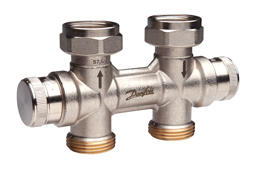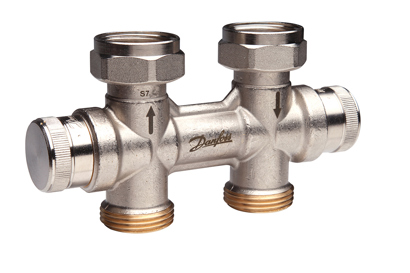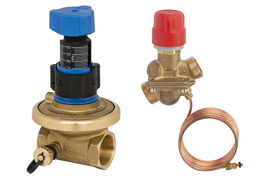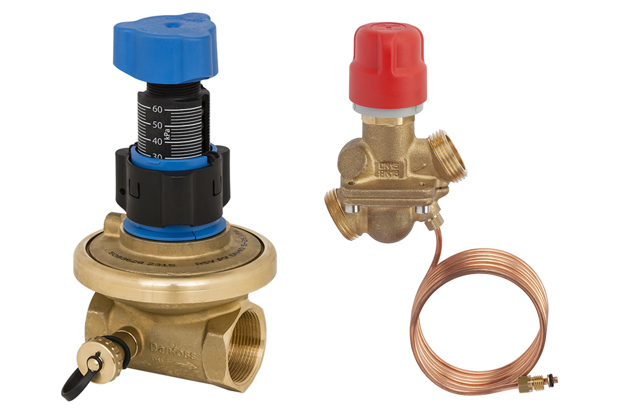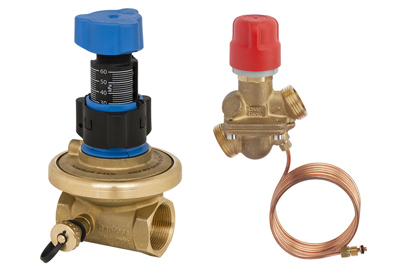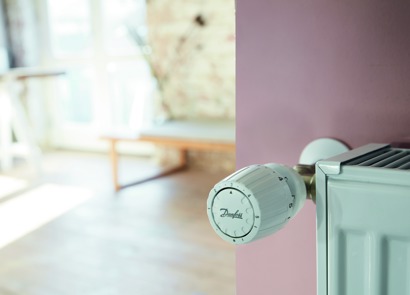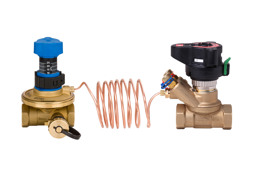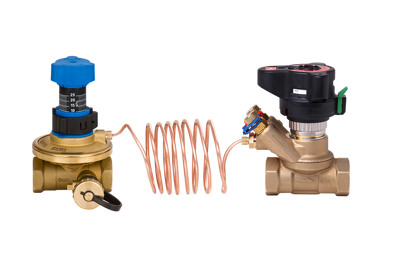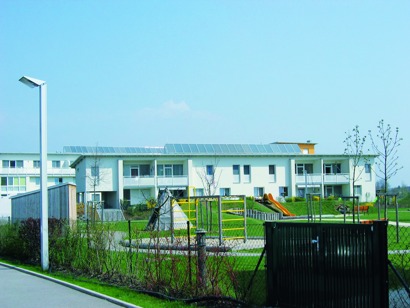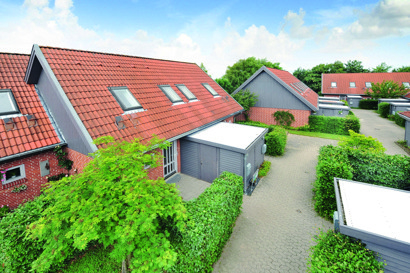What is dynamic hydronic balancing?
In contrast to static balancing, the partial load case is also considered in the dynamic balancing variant. Using dynamic balancing valves or pressure independent thermostatic valves, the differential pressure on the radiator or in the line can be kept constant throughout the building under all load conditions with this balancing solution. The mass flows are correctly maintained even under partial load or changing load conditions – hence the name dynamic balancing.
Related products
-
if (isSmallPicture) {


 Ventilgehäuse
VentilgehäuseRobust gebaut und auf die Anforderungen des gewerblichen und industriellen Bereichs ausgelegt, steht ein umfassendes Programm an Danfoss Ventilgehäusen für nahezu alle Systeme und Einbaubedingungen zur Verfügung.
-
if (isSmallPicture) {


 Heizkörperverschraubungen
HeizkörperverschraubungenHahnblöcke für Ventilheizkörper mit und ohne Differenzdruckregelung
-
if (isSmallPicture) {


 Automatischer Differenzdruckregler mit Durchflussbegrenzung Typ AB-PM
Automatischer Differenzdruckregler mit Durchflussbegrenzung Typ AB-PMDas AB-PM ist ein kombiniertes Abgleichventil, das sowohl Differenzdruckregelung als auch Durchflussbegrenzung ermöglicht. Die Ventile verhindern Druckschwankungen unter Voll- und Teillastbedingungen und können mit einem Stellantrieb zur Zonenregelung ausgestattet werden.
-
if (isSmallPicture) {


 Thermostatköpfe
ThermostatköpfeDanfoss Thermostatköpfe halten die von Ihnen gewünschten Raumtemperaturen aufrecht und sorgen so für optimalen Komfort in Ihrem Zuhause – Raum für Raum, tragen dazu bei, den Energieverbrauch zu senken und Ihre Heizkosten zu reduzieren.
-
if (isSmallPicture) {


 Automatische Strangventile
Automatische StrangventileAutomatische Strangventile sind die dynamische Abgleichlösung für viele Heiz- und Kühlsysteme. Differenzdruckregler halten den Differenzdruck in einem Strangabschnitt konstant und eliminieren Druckschwankungen, die in Systemen mit variablem Durchfluss, wie z.B. in Zweirohr-Heizungssystemen bei Teillastbedingungen. Diese Ventiltypen können in Heizkörper- und Fußbodenheizungen, aber auch in Kühlsystemen eingesetzt werden.





